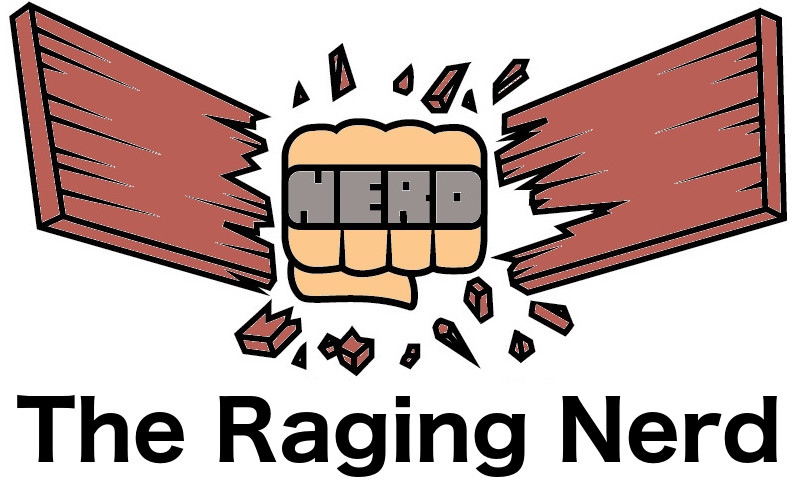The Vulcan Salute
One of the interesting things about popular culture is that popular culture eventually just becomes culture. What starts off as a joke or a meme or a tv gag eventually finds its way into the common language. Many pop culture phenomena are ephemeral and eventually fade away. Today’s flavor of the week pop song fades away after a few months and that’s that. Maybe it gets a snippet of air play here and there. But some pop cultural phenomena endure and take on a life of their own, living far beyond the bands, franchises, and brands that gave them life.
 One of those pop cultural phenomena is the Vulcan salute. Go find a teenager who has never seen Star Trek and ask them if they recognize the hand sign with “Live long and prosper”. I’ll bet you anything that they do. That’s because Star Trek was such a good show that it wound up giving birth to many pop cultural phenomena that made it over the gap and became permanently part of our culture. One of the big contributions to the cultural lexicon from Star Trek is the Vulcan salute, a hand signal typically accompanies by the words “Live long and prosper.” You’ll see this gesture and its accompanying phrase on Star Trek t shirts.
One of those pop cultural phenomena is the Vulcan salute. Go find a teenager who has never seen Star Trek and ask them if they recognize the hand sign with “Live long and prosper”. I’ll bet you anything that they do. That’s because Star Trek was such a good show that it wound up giving birth to many pop cultural phenomena that made it over the gap and became permanently part of our culture. One of the big contributions to the cultural lexicon from Star Trek is the Vulcan salute, a hand signal typically accompanies by the words “Live long and prosper.” You’ll see this gesture and its accompanying phrase on Star Trek t shirts.
Believe it or not, the Vulcan salute was not created by the show’s writers. The writers of Star Trek did not conceive of the gesture, nor the words. Leonard Nimoy himself invented the gesture and put the words to it. Leonard Nimoy is Jewish and he based the gesture on something he saw Orthodox Rabbis doing when visiting an Orthodox synagogue as a child. He saw that they made a gesture where the ring and middle fingers were separated and the thumbs extended, and that they used this gesture when placing their hands on something to bless it. The hand position mimics the Hebrew letter “shin” which is short for one of the names of God in Hebrew. Nimoy created this gesture when he decided that the Vulcans were a race for whom the hand was very important.
The phrase “Live long and prosper,” while not sourced to any particular historical text, does have some antecedents. Various phrases in ancient Egyptian and medieval English literature have phrases that are not exactly the same as “Live long and prosper” but are fairly similar to it. “Live Long and prosper” is featured on many Star Trek t shirts.
Bizarro
One of the strangest supervillains and comics, not to mention one of the most unique entries in Superman’s rogues gallery. Many superheroes have a “doppelganger” sort of villain with whom they contend. Batman has Catwoman and Spiderman has Venom. Superman’s doppelganger nails the exact purpose of a doppelganger villain, which is to have a villain who possesses many of the hero’s strengths while simultaneously embodying everything he is not. Catwoman has Batman’s stealth, but is fickle versus Batman’s rationality. Venom has Spiderman’s powers but is brutish and destructive versus Spiderman’s soft-heartedness and Peter Parker’s modesty. Bizarro has many of the same powers as Superman, but is a hopeless troglodyte who runs directly counter to the high ideals that Superman holds. Bizarro is a villain frequently featured on Superman t shirts.
 Bizarro’s backstory changes, like all comic book characters, but there are some consistent themes. In most of the stories, he is the result of some kind of duplication experiment, such as a duplication ray. The general theme is that, whatever experiment accidentally creates him, Bizarro is an imperfect copy of Superman. He’s never quite the exact copy he’s supposed to be. This is why, whenever you see Bizarro, he seems to be stupid or speak in broken sentences. He is destructive, but in an oblivious sort of way. Very often, he seems to think that he is Superman. He doesn’t quite understand morality, either.
Bizarro’s backstory changes, like all comic book characters, but there are some consistent themes. In most of the stories, he is the result of some kind of duplication experiment, such as a duplication ray. The general theme is that, whatever experiment accidentally creates him, Bizarro is an imperfect copy of Superman. He’s never quite the exact copy he’s supposed to be. This is why, whenever you see Bizarro, he seems to be stupid or speak in broken sentences. He is destructive, but in an oblivious sort of way. Very often, he seems to think that he is Superman. He doesn’t quite understand morality, either.
And that’s another big part of his personality. Bizarro, in most incarnations, is not exactly evil. It’s more that he is immoral, because he does not understand the difference between right and wrong. In a way, Bizarro is, in fact, quite innocent. This is another part of his opposition to Superman: where Superman has a strong sense of justice and stands for certain principles, of which he is keenly aware, Bizarro has no principles at all. Bizarro doesn’t even have evil principles. He’s just amoral. He’s a bull in a China shop, not only in the sense of breaking things, but in the sense that neither Bizarro nor the bull know what they’re doing or are fully aware that they are breaking things.
Very often, especially in more recent treatments, Bizarro is dealt with relatively more gently than other villains. Superman often stops or imprisons him somehow without hurting him. Also, Bizarro frequently escapes to live on his own somewhere where nobody will bother him. In one of the earlier adaptations of his character, the duplicator ray the creates Bizarro is also used on Lois Lane. This creates a Bizarro Lois, who is immediately attracted to Bizarro. The two escape to make their own life elsewhere. This is in keeping with the strange innocence of Bizarro’s character. Because he does not know right from wrong, he implicitly does not deserve punishment or “justice” of the same kind that other villains do. Instead, Bizarro often finds himself being released or isolated in a way that protects him from the world as much as it protects the world from him.
What is Mega Man’s story?
Mega Man is a very recognizable video game character featured on many video game shirts. A lot of people know who he is even if they’ve never played any of the games. Released in the late 1980s, the first Mega Man game was revolutionary because it allowed the player to choose what order to defeat the bosses in. Each boss gave the player a new weapon to use, which would be very effective against at least one other boss. For example, an ice-themed boss might give you a weapon that works well against the fire boss. Choosing which boss to beat and in what order made the original game stand out.
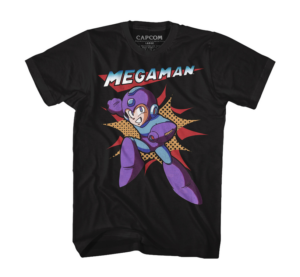 But what was the story of Mega Man? In the original game, the robot (originally known as Rock Man) was a robot created by a scientist named Dr. Light. Dr. Light had a colleague named Dr. Wiley who helped created robots. When Dr. Wiley went rogue and reprogrammed Dr. Light’s robots, one of the only ones who escaped was Rock Man, who offered to be converted into a combat robot to stop Dr. Wiley. This was a simple enough story, and Dr. Wily was the boss of the original game. He was one of those old style video game bosses that is beaten in several stages.
But what was the story of Mega Man? In the original game, the robot (originally known as Rock Man) was a robot created by a scientist named Dr. Light. Dr. Light had a colleague named Dr. Wiley who helped created robots. When Dr. Wiley went rogue and reprogrammed Dr. Light’s robots, one of the only ones who escaped was Rock Man, who offered to be converted into a combat robot to stop Dr. Wiley. This was a simple enough story, and Dr. Wily was the boss of the original game. He was one of those old style video game bosses that is beaten in several stages.
This was a short lived part of the whole mythos, though. A few years later, in 1993, the character who would come to truly define the series was created. The character’s name was X, although he is commonly also called Mega Man. X is a successor to the original Mega Man that was created and placed in suspended animation for a century before being recovered by Dr. Cain. He was originally created by Dr. Light, but Dr. Cain was the scientist who found him a century later. Ignoring Dr. Light’s warnings that were logged in the time capsule, Dr. Cain proceeded to replicate Mega Man and create many more robots like him, called Reploids.
The Reploids (replica androids) were different from their predecessors. Like Mega Man X, they had free will and could make their own decisions. Disaster struck when a certain group of them became known as “mavericks”, turning against their human masters with their newfound free will. A group of maverick hunters was created, consisting of loyal reploids who could hunt down and kill the mavericks. One such maverick hunter was called Sigma. Sigma was originally a maverick hunter, but he eventually became a maverick himself and becomes the main villain of Mega Man X. Another character is introduced, named Zero, who is like the opposite of Sigma: originally a creation of Dr. Wily, he joins the maverick hunters later on.
The plot becomes more complicated from there, of course, but the brass tacks of it have been laid out. The plot as a whole is very confusing for a newcomer to the series, so if you don’t want to sound like a fool in front of die-hard fans, this article should help you out.
Video Game Review: Streets Of Rage 3
Streets of Rage introduced the franchise to the Sega Genesis, and Streets of Rage 2 brought out the full potential of the game. Streets of Rage 3 takes its proper place as the game that realized all of the possible nuances that the game was capable of. The first game was rough, a kind of experiment. The second game was well-executed and really brought the series popularity. The third game is the mature franchise exploring all of its possibilities. Hidden characters, multiple endings based on difficulty, new special moves, and all characters having the capability to dash are just a few of the things on offer here.
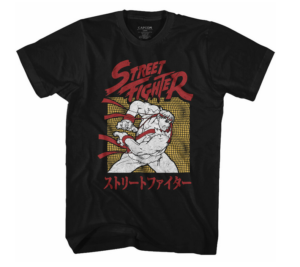 The four available characters are Axel, Blaze, Skate, and the new Dr. Zan. Axel is the all-rounder leaning toward power, while Blaze, the female fighter, is the all-rounder leaning toward speed. Skate is still the little speedy guy. Instead of the big wrestler, Max, we now get the cyborg Dr. Zan. Axel, Blaze, and Skate retain their special moves from the previous game, with some tweaks. Dr. Zan is a cyborg who can cover himself in electricity or use a far-reaching electrical cyborg arm attack. Additionally, there is a hidden character, Roo, a boxing kangaroo that can be acquired mid-game and then used when a player gets the opportunity to switch characters when using a continue.
The four available characters are Axel, Blaze, Skate, and the new Dr. Zan. Axel is the all-rounder leaning toward power, while Blaze, the female fighter, is the all-rounder leaning toward speed. Skate is still the little speedy guy. Instead of the big wrestler, Max, we now get the cyborg Dr. Zan. Axel, Blaze, and Skate retain their special moves from the previous game, with some tweaks. Dr. Zan is a cyborg who can cover himself in electricity or use a far-reaching electrical cyborg arm attack. Additionally, there is a hidden character, Roo, a boxing kangaroo that can be acquired mid-game and then used when a player gets the opportunity to switch characters when using a continue.
The game has multiple difficulties, and the player will see different endings depending on which difficulty is selected. Only players who play through at the highest difficulty will see the true ending. The mob boss, Mr. X, returns as the villain. But now he’s a brain in a vat. This is a plot twist that you only find out if you play on hard. The first encounter with Mr. X reveals that the Mr. X you’re fighting is actually a cyborg. The upper half of his body burns away at the beginning of the fight to reveal a mechanical robot.
One of the most noticeable aspects of this game is its sheer difficulty. The player must beat the game on the highest difficulty in order to see the true ending, and that is a tall order. There are enemies who wield guns; enemies who cannot be thrown; kangaroos; ninjas that can block and dodge; robots that leap and shoot projectiles. Getting to the end of Streets of Rage 3 without losing all of your lives is a very tall order indeed.
People today still wear Streets of Rage video game t shirts, and if you’ve ever played this magnificent series, you’ll know the reasons why. Of all the side-scrolling beat ‘em ups that were seen in arcades and home console collections in the 90s, Streets of Rage was one of the foremost and most enjoyable franchises of all. If you ever want to dip your feet into retro gaming, you could do a lot worse than to check out Streets of Rage and its two awesome sequels.
Video Game Review: Streets Of Rage 2
So I recently wrote a review of Streets of Rage. That game was historically important, but this is the part where the franchise really starts cookin’. In this way, it is somewhat similar to what happened with the Assassins Creed games. The original Assassins Creed was a decent enough game with a great concept but mediocre execution. The sequel, Assassins Creed II, kicked everything up a notch and really brought out the potential of the concept. Streets of Rage was a similar franchise, in that it had a lackluster first title but was then brought to a stunning execution in subsequent installments.
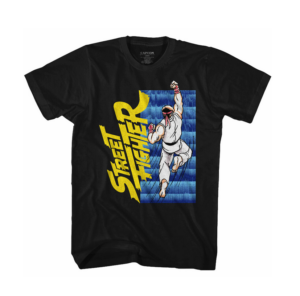 The second Streets of Rage game had a simple formula: MORE! There were more characters, more enemies, more moves, more locations, more dynamics. Instead of three characters with similar movesets and statistical differences, there are four characters: Axel, Blaze, Skate, and Max. There are levels ranging from theme parks to streets to boats. The players don’t go left to right, but go left, right, up, and down. There are also multiple weapons that can be used, which have different properties and powers. There are also different bosses, including fat guys, ninjas, samurai, thugs, sideshow freaks, and more. The game is positively bursting with variety.
The second Streets of Rage game had a simple formula: MORE! There were more characters, more enemies, more moves, more locations, more dynamics. Instead of three characters with similar movesets and statistical differences, there are four characters: Axel, Blaze, Skate, and Max. There are levels ranging from theme parks to streets to boats. The players don’t go left to right, but go left, right, up, and down. There are also multiple weapons that can be used, which have different properties and powers. There are also different bosses, including fat guys, ninjas, samurai, thugs, sideshow freaks, and more. The game is positively bursting with variety.
The characters are also all very different. Axel and Blaze are the all-rounders, with Axel leaning more toward power and Blaze leaning toward speed. Axel has the Dragon Punch special move that hits everyone around him with a flaming fist. Blaze can do a flip that hits enemies in all directions. Skate, a smaller character with less power but having the ability to dash, and spin on his head and lash out in all direction with his roller skates. Max, the big slow wrestler, can spin around and hit enemies in all directions with his fists. Special moves are powerful but consume a small amount of health.
In addition to ordinary special attacks, each character also has a “directed” special attack, and these can involve repeated uppercuts (Axel), energy projection (Blaze), a flying corkscrew kick (Skate) and a rolling tackle (Max). And this is without getting into the various knives, pipes, bats, and grenades that characters can pick up along the way. Powerups include extra lives, coins that grant a higher score, apples and turkeys that restore health.
In the final analysis, Streets of Rage 2 is a real gem of the beat ‘em up genre. With its multifarious locations, characters, special moves, weapons, powerups, fighting styles, and more, Streets of Rage 2 took the whole beat ‘em up genre to the next level. With this game, beat ‘em ups went from being a quarter sink at the local laundromat to being an immersive, varied, and endlessly entertaining gameplay experience. One way that you can tell when a videogame is becoming very compelling is when gamers become attached to the characters. Streets of Rage 2 was where the characters, especially Blaze and Axel, acquired a following and became icons among gamers. Decades later, everyone remembers Axel’s cry of “Grand upper!” and Blaze’s memorable game sprite, which can still be found on video game t shirts.
Video Game Review: Streets Of Rage
If you were a gamer of any stripe during the early 90s, you knew all about Streets of Rage. One of the most famous examples of the beat ‘em up genre, Streets of Rage allows you to pick from one of three characters: Adam, Axel, and Blaze. The characters are all very similar and possess the same movesets. What differentiates them are the character sprites, which look very different, and their stats. Adam has high power and jumps high, but is slower. Axel has high power and is fast, but does not jump very high. Blaze, the female, has high speed and jumps well, but has lower power. The game can be played with one or two players.
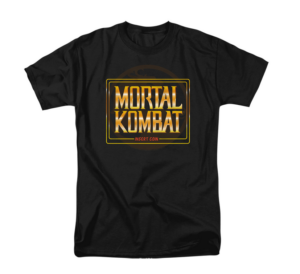 While the characters do not have unique styles or super moves (this comes later in the series), they do have something resembling a super move. If the special button is pressed, the camera will shift backward to reveal a police car. The police car will pull up and a policeman will pop out of it with either a bazooka or gatling gun. The policeman fires the weapon. Then the camera shifts back to the battlefield, where fire will rain down and destroy or greatly damage all enemies on screen. Each level, the player begins with one “special” use to call the police officers.
While the characters do not have unique styles or super moves (this comes later in the series), they do have something resembling a super move. If the special button is pressed, the camera will shift backward to reveal a police car. The police car will pull up and a policeman will pop out of it with either a bazooka or gatling gun. The policeman fires the weapon. Then the camera shifts back to the battlefield, where fire will rain down and destroy or greatly damage all enemies on screen. Each level, the player begins with one “special” use to call the police officers.
This is a very strange mechanic, but not totally unheard of in beat ‘em up games. For example, in Spider Man & Venom: Separation Anxiety, both the players can call superheroes from the Marvel Comics Universe to come attack all opponents onscreen. So the use of “summons” or “calls” during beat ‘em up games does have a history outside of Streets Of Rage. Later installments in this franchise would delete the “call” move in favor of special moves unique to each characters, and even give multiple specials to different characters. However, the call mechanic, as discussed earlier, would go on to crop up in other side scrolling beat ‘em ups later on in the 90s.
The game is fairly short and ends when the players defeat a gun-wielding mob boss named Mr. X. Mr. X is the antagonist of all three of the original Streets of Rage games. He wields a tommy gun and is portrayed as the boss of the criminal syndicate that sends out all of the goons that the players encounter.
Streets Of Rage is not the best beat ‘em up game from the 90s, but its two sequels were some of the greatest beat ‘em up games ever made. Streets Of Rage is therefore very important historically because it marks the beginning of the one of the most successful (and playable!) beat ‘em up franchises. Check it out for its historical importance and not-too-shabby gameplay, but keep in mind that Streets of Rage 2 and Streets of Rage 3 are the real crown jewels of this franchise, and the ones whose cover art frequently appear on video game t shirts.
